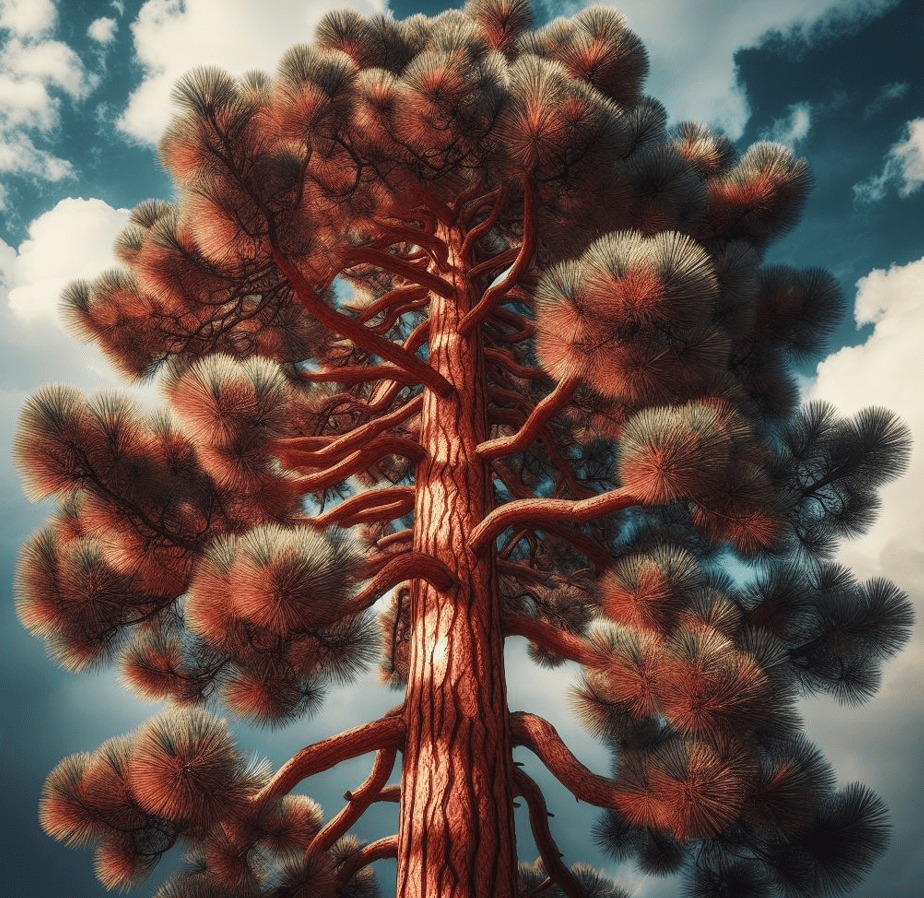
The ponderosa pine (Pinus ponderosa) is a North American icon known for its immense size, striking orange-brown bark, and long, fragrant needles. Adding this majestic tree to your landscape can be incredibly rewarding if you have the space and the suitable climate. Here’s everything you need to know to grow a thriving ponderosa pine successfully.
Is a Ponderosa Pine Right For You?
Before embarking on this evergreen adventure, it’s crucial to ask yourself:
- Space: Ponderosa pines can soar to heights of 60-125 feet! Ensure you have a vast, open area for the tree’s mature size.
- Climate: These pines thrive in USDA hardiness zones 3-7. They relish hot, dry summers and cold winters. If your region doesn’t fit this profile, consider regionally suitable alternatives.
- Purpose: Are you seeking shade, a striking specimen tree, or a native addition to your woodland? Ponderosa pines excel in providing all of these.
Choosing Your Ponderosa Pine
- Wild-type or Cultivar: Traditional ponderosa pines are magnificent but massive. If space is a concern, explore compact cultivars like ‘Nana’ or ‘Pendula,’ perfect for smaller landscapes.
- Source: Purchase young trees from reputable nurseries or native plant societies for the best chance of success.
Ideal Conditions for Your Ponderosa
- Sunlight: Full, glorious sunshine is essential! Ponderosa pines won’t tolerate shady locations.
- Soil: They prefer well-drained, sandy, or loamy soil with a slightly acidic pH. If your soil is heavy clay, amend it substantially with sand and organic matter.
- Location: Plant well away from structures, power lines, and other trees to accommodate the ponderosa’s expansive growth.
Planting and Care for a Thriving Tree
- Timing: Plant in fall or spring during the tree’s dormant periods.
- Watering: Water deeply and regularly for the first two years of establishment. Afterward, ponderosa pines become remarkably drought-tolerant.
- Fertilizing: Avoid fertilizing young trees unless a soil test reveals a deficiency. Mature trees rarely need supplemental feeding.
- Pruning: Prune sparingly, only to remove dead or diseased branches during the tree’s dormant period (winter).
- Pests & Diseases: Watch for bark beetles and fungal diseases. Consult a local arborist if you notice signs of trouble.
The Rewards of Growing a Ponderosa Pine
With proper care, your ponderosa pine will bless your landscape with:
- Stately Beauty: The towering form and beautiful bark create a dramatic focal point.
- Year-Round Interest: Evergreen needles offer vibrant color even in winter.
- Wildlife Habitat: Ponderosa pines provide food and shelter for birds and small mammals.
Tips From Experienced Growers
- Mulch: A thick layer of mulch around the tree’s base helps retain moisture and suppress weeds.
- Patience: Ponderosa pines grow moderately fast, but it takes years to reach full stature. Enjoy the journey of watching your tree mature!
As your young ponderosa establishes, focus on these key care areas:
- Watering: After the first few years, ponderosa pines only need supplemental watering during extreme drought. Observe your tree – drooping needles are a sign of water stress.
- Fertilization: Fertilize sparingly and only if a soil test indicates a deficiency. Overfertilization can harm trees.
- Pruning: Prune minimally, removing dead, damaged, or diseased branches during the tree’s dormant period (winter). Avoid over-pruning, which can stress the tree.
- Monitoring: Observe for pests like bark beetles and diseases like needle blight. Early intervention is critical to managing these problems.
- FAQ
-
How fast does a ponderosa pine grow?
- Ponderosa pines grow moderately fast, adding around 1-2 feet per year.
-
Can I grow ponderosa pine in a container?
- Due to their extensive root system, ponderosa pines are not ideal for long-term container growth. Only dwarf cultivars may be suitable for containers for a limited time.
-
What wildlife is attracted to ponderosa pines?
- Birds like nuthatches and woodpeckers enjoy the seeds, while squirrels and other small mammals shelter in the branches.
-
Are ponderosa pine needles flammable?
- Like any evergreen, ponderosa pine needles can be flammable if very dry. Maintain good clearance around the tree’s base, especially in fire-prone areas.
-
Ponderosa Pine Uses: Beyond Beauty
Ponderosa pines aren’t just a majestic sight; their wood and other parts have been valued for centuries. Historically, Native Americans used various tree elements for food, medicine, dyes, and construction materials. Today, ponderosa pine lumber is prized for its strength and workability.
It’s widely used in general construction, furniture making, and even musical instruments. Additionally, due to its size and form, ponderosa pines are a beautiful source of shade, wind protection, and serve as stunning specimen trees in expansive landscapes.
Conclusion
While the ponderosa pine isn’t suitable for every garden, those with the space and the appropriate climate can grow a truly remarkable tree. By following the guidelines provided, you can enjoy the satisfaction of nurturing a ponderosa pine from a sapling to its full, impressive stature.

























